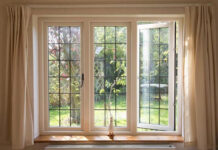Day in and day out, billions of people rely on LED lights to better their lives. Whether they are looking to LED lighting to illuminate their homes, run their offices, or even increase visibility in warehouses, people have come to rely on these lights. But what makes them so unique that they would surpass traditional lights that people had trusted for decades? Let’s find out!
Cost-Effectiveness
Do you know anyone who would turn down the opportunity to save money? It then makes sense that most people have ditched traditional bulbs and decided to count their coins. LED bulbs may come at a slightly higher price than conventional bulbs. Of course, this disparity has since reduced, with more manufacturers offering LED lights in the market. But this cost difference is nothing compared to the resultant cost savings. For one, LED bulbs last longer (we will get into this), require less maintenance, and are more energy-efficient. Of course, people mainly focus on the last part because everyone wants to lower their utility bills.
Longevity
Here’s an annoying thing about traditional bulbs- while they burn bright and boast amazing colors, they often need replacement. One minute you are installing the bulb, and the other, you are back in the store looking for a replacement bulb. On average, an incandescent bulb will offer you anything from 750 to 2,000 hours. But reliable LED high bay lights can last you as many as 40,000 to 150,000 hours. This kind of longevity is seen across all LED lights. Even CFL lights and halogen lights do not come close to these figures. With this kind of durability, what would keep people from going to https://www.lepro.com/150w-dimmable-ufo-high-bay-led-light.html and choosing an LED light?
Energy Efficiency
In the wake of environmental conservation efforts, anything that takes up too much energy is no longer considered ideal. So, it helps matters that LED bulbs consume as much as less than 65% less energy than halogen bulbs. To make matters even more interesting, studies show that ditching traditional lights for LED lights can help people save as much as 20% to 60% on utility costs. Stats show that the average 60-watt incandescent light costs $4.80 in utility costs each year. That, compared to a 12-watt LED light which takes up only $1.00, is quite concerning. You may see the difference in watts and think that the LED light would be less effective.
All this time, it turns out that using watts as a measure of LED lights’ effectiveness was not the way to go. With incandescent bulbs, watts measure the light’s output and brightness levels. So, the more watts you use, the brighter and better the light will be. But with an LED light, the energy efficiency is so high that using watts would misguide you. Instead, the best measure would be lumens per watt, which shows you the light output. The 60-watt incandescent light can provide just as much output as the 12-watt LED light based on this. The next point explains this even more.
Reduced Heat Emission
Most of the energy used by traditional bulbs goes into heating the bulbs and their components. It almost gets split halfway into light and heat. Over time, this heat emission damages the bulb’s components, ridding it of its use. Of course, there’s also a safety aspect. With bulbs producing high amounts of heat, electrical malfunctions can occur.
LED bulbs, on the other hand, use up very little energy to produce heat to function. For this reason, they save quite a ton on energy, hence their reduced utility costs. Moreover, this reduced emission makes it easy to house them without posing a danger to people and fittings around the lights. Also, this contributes to the longevity of the bulbs because their components do not burn out.
Did we mention that LED bulbs do not need cooling? That takes away another cost aspect common with traditional bulbs in the workplace. What’s not to love about these lights?
Directional Lighting
Installing traditional lights in areas where you want precise lighting does not often work. The light tends to spread over a wide area and scatters, not giving you the targeted look that you desire. LED lighting is quite different as it provides focused light which hits the target from an angle. You can even adjust its level of brightness to ensure the focus is on the specified location. With traditional lighting, the light covers a 360-degree angle and cannot afford you such control.
Brightness
Remember the aspect about lumens? LEDs have much higher lumens per watt output compared to traditional lights. They emit lights similar to daylight which are perfect for task, accent, and ambient lighting. This quality of light sets the tone for the home or business. Whether you’re working or relaxing in your space, you can count on bright and uniform light from LEDs. Rather than start strong and waver after a distance, LED light remains evenly distributed until it hits its target. Moreover, it lights up instantly and does not spend time starting up as you see with traditional lights.
Color Rendering
You’re not stuck with one color when it comes to LEDs. Thanks to their color rendering abilities, you can use these lights in various applications, be it in the home or business. From overhead lights to displays to recessed lights, these lights can pretty much serve any purpose.
Environmental Conservation
With every year that passes, we are going green to save the planet and slow the climatic changes. Of course, this requires alternative energy sources, seeing as energy production is one of the biggest environmental polluters. LED lighting allows homes and businesses alike to cut back on their energy consumption, paving the way for a greener planet. Besides, more companies are now aligning with green goals and are more likely to partner with firms that bear similar interests.
LED lights are the perfect lighting options as their light will remain strong and uniform to the very end. While they may dim towards the end of their lives, they will provide reliable lighting for tens of thousands of hours.



































































